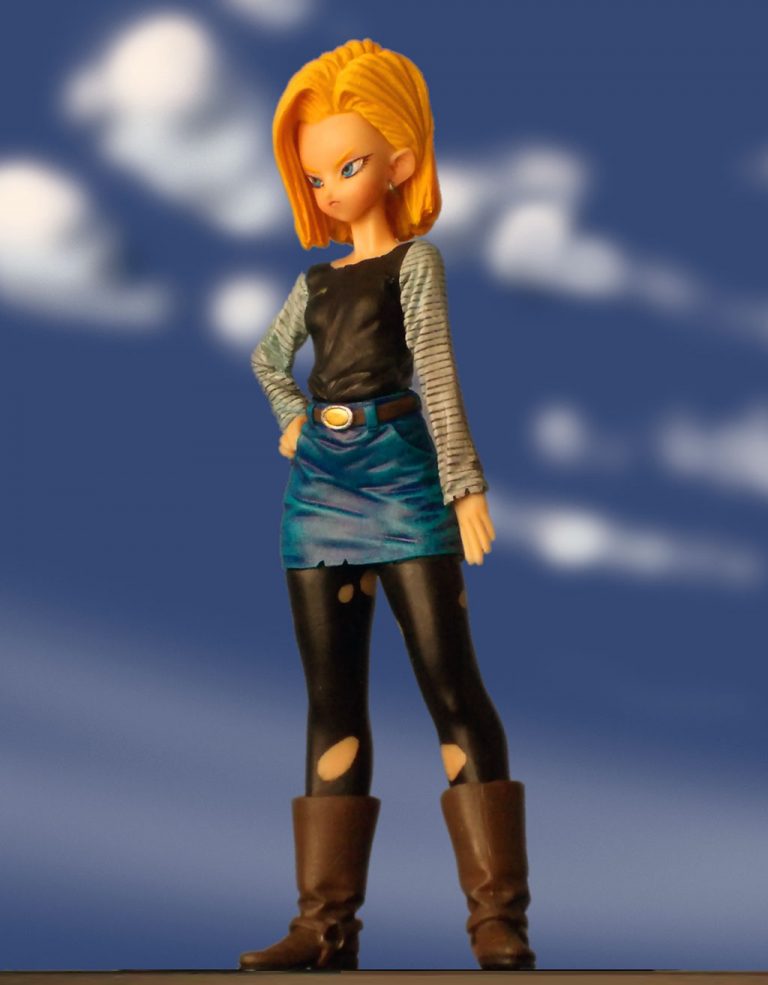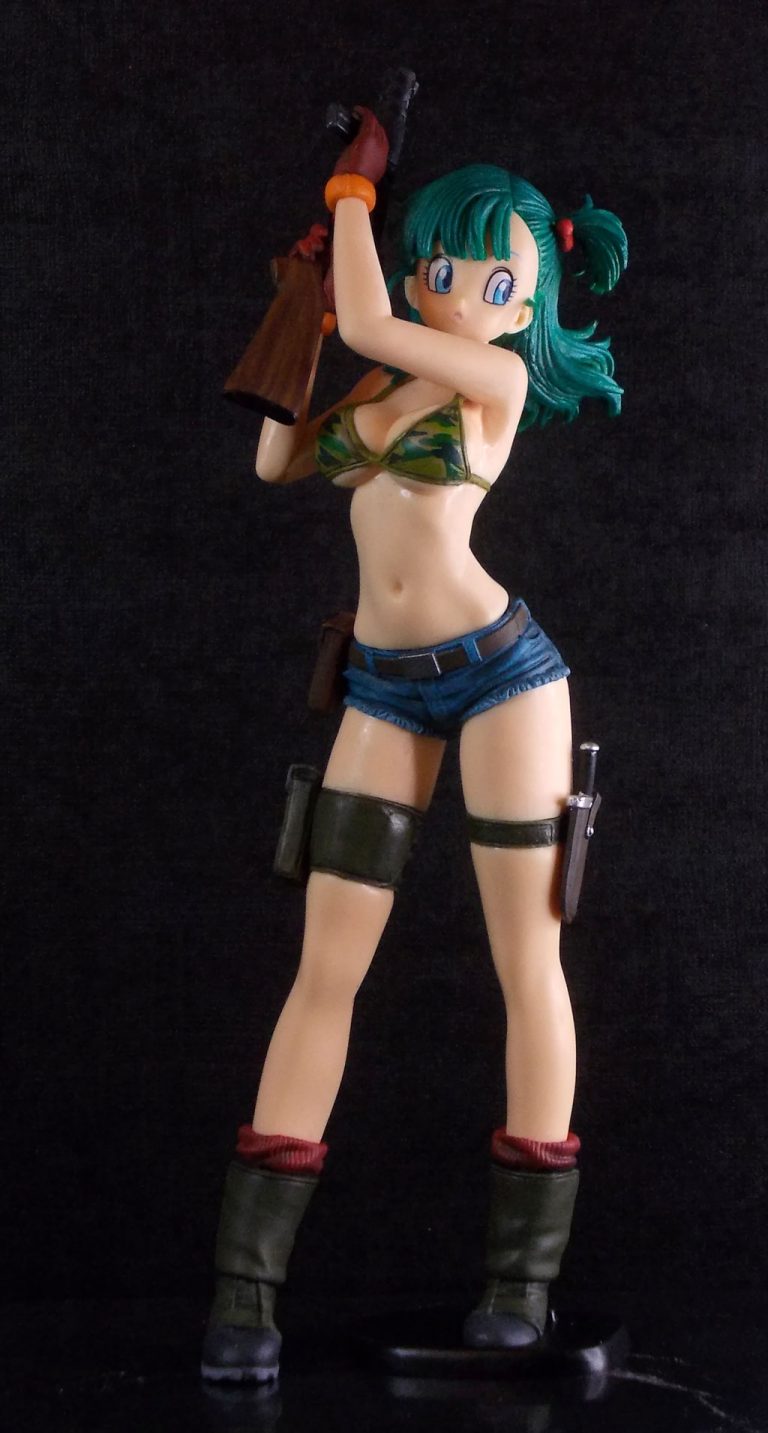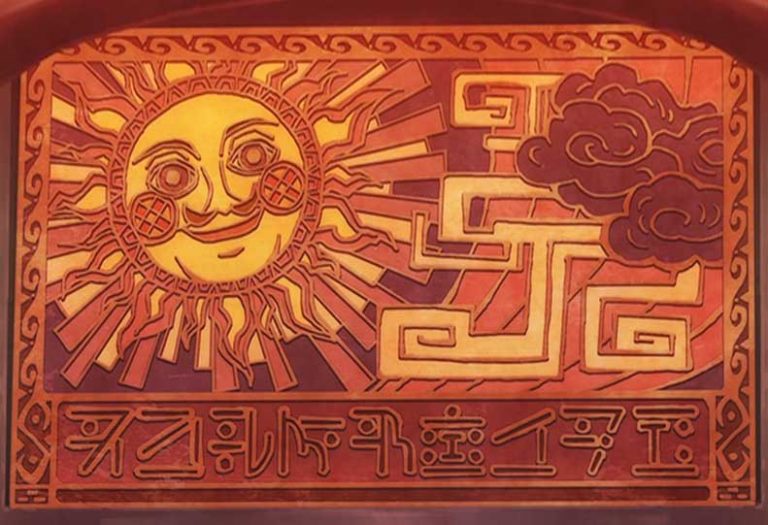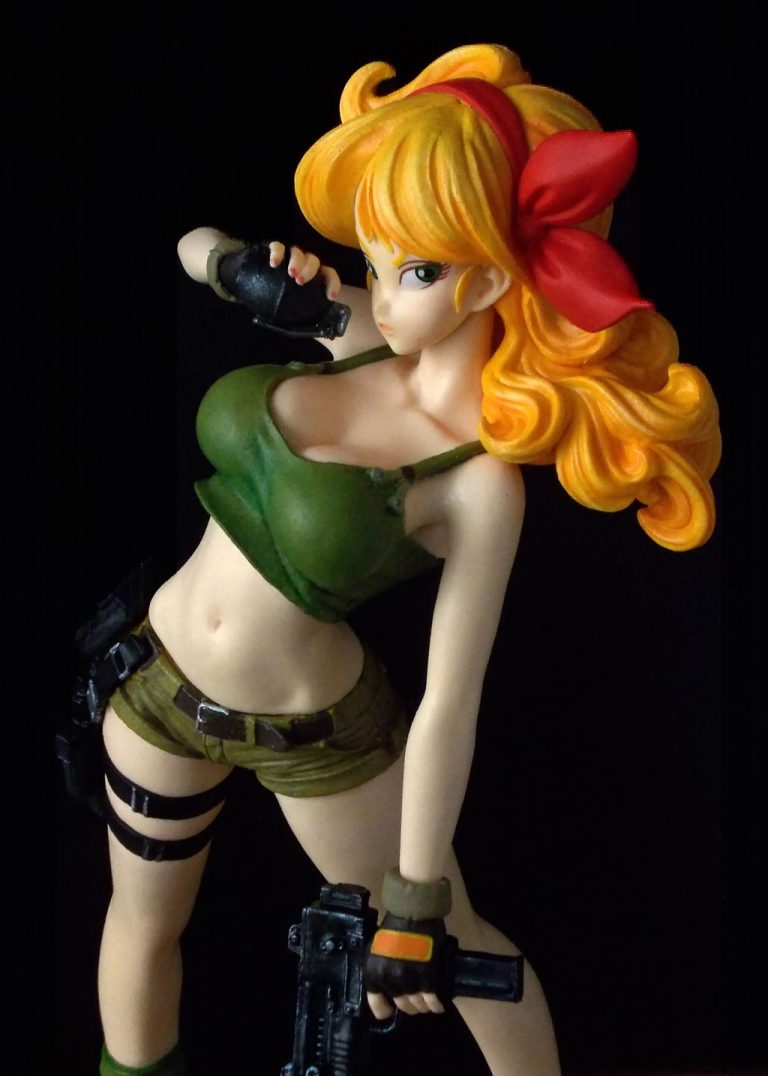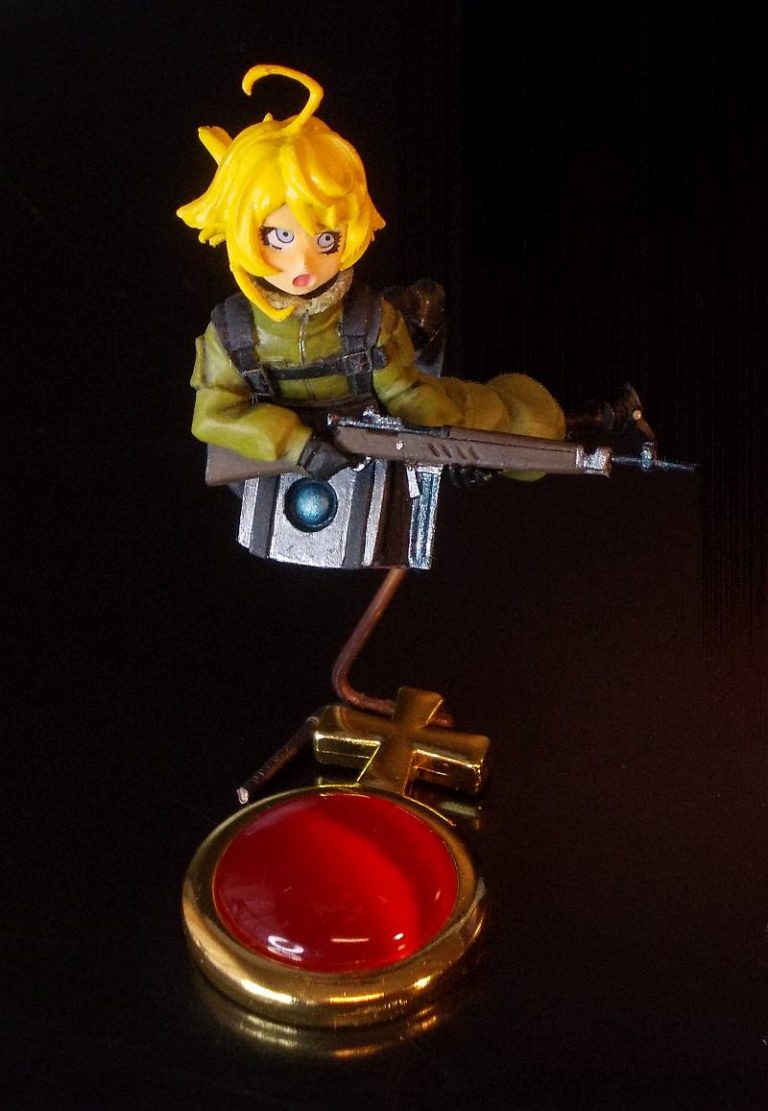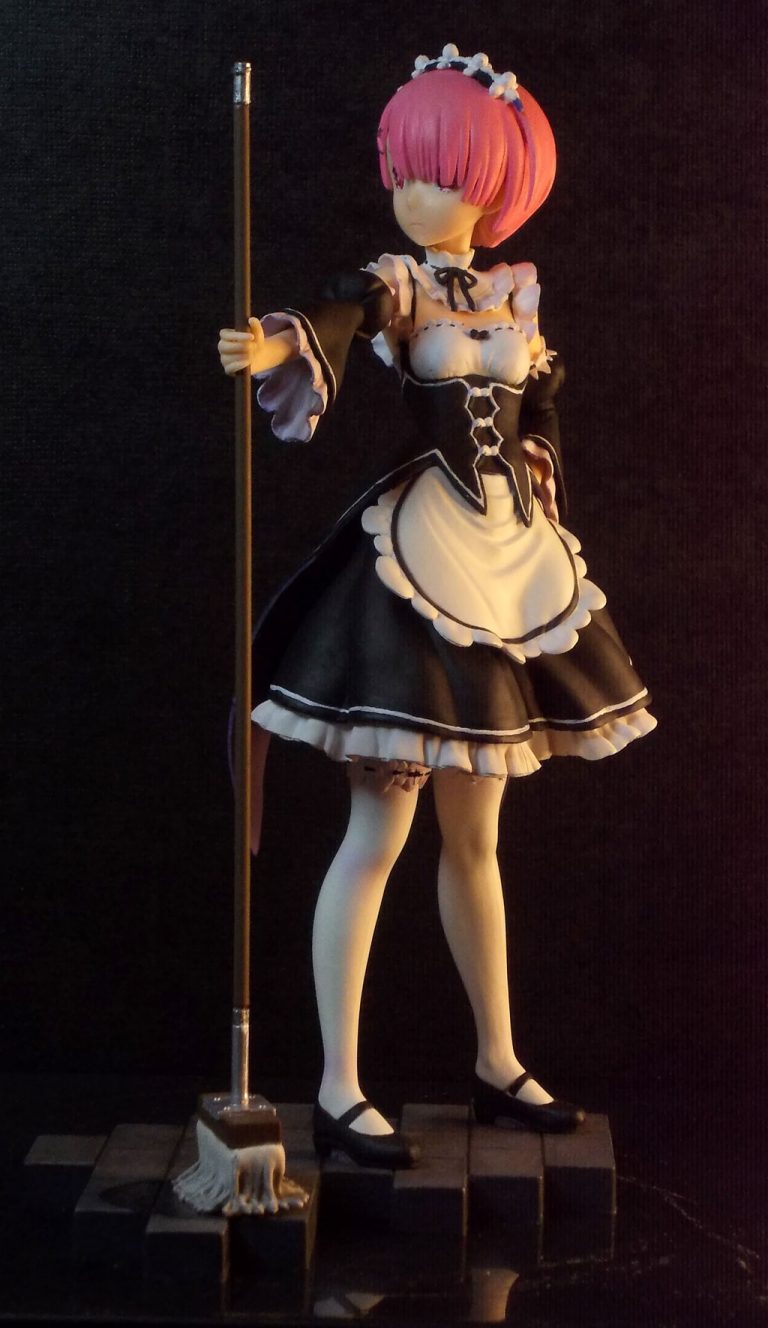I bought this sword when it was heavily discounted because a store closed, but there was much I disliked about it.
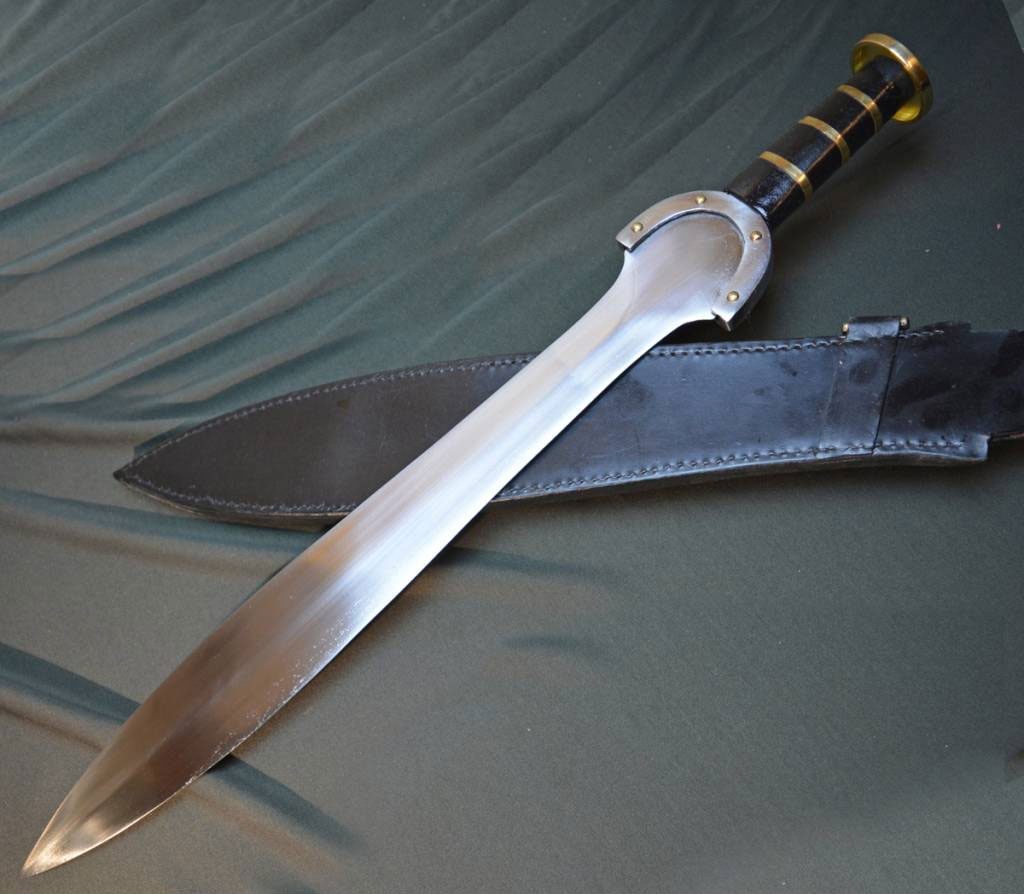
Its blade is much too heavy, it’s also blunt, yet the rat-tail tang construction looks too flimsy for “re-enactment” use. The grip is very uncomfortable to hold, with the thin brass strips and their fixing nails cutting in the hand. But for a wall decoration it’s too crude and uninteresting (the blade isn’t even symmetrical).
Having dismantled it into a so-so blade and some scrap, I decided I would give it a xiphos-style hilt, since I already have a Celtic leaf-blade. And as it will be mostly decorative I thought I might as well give it a fantasy twist:
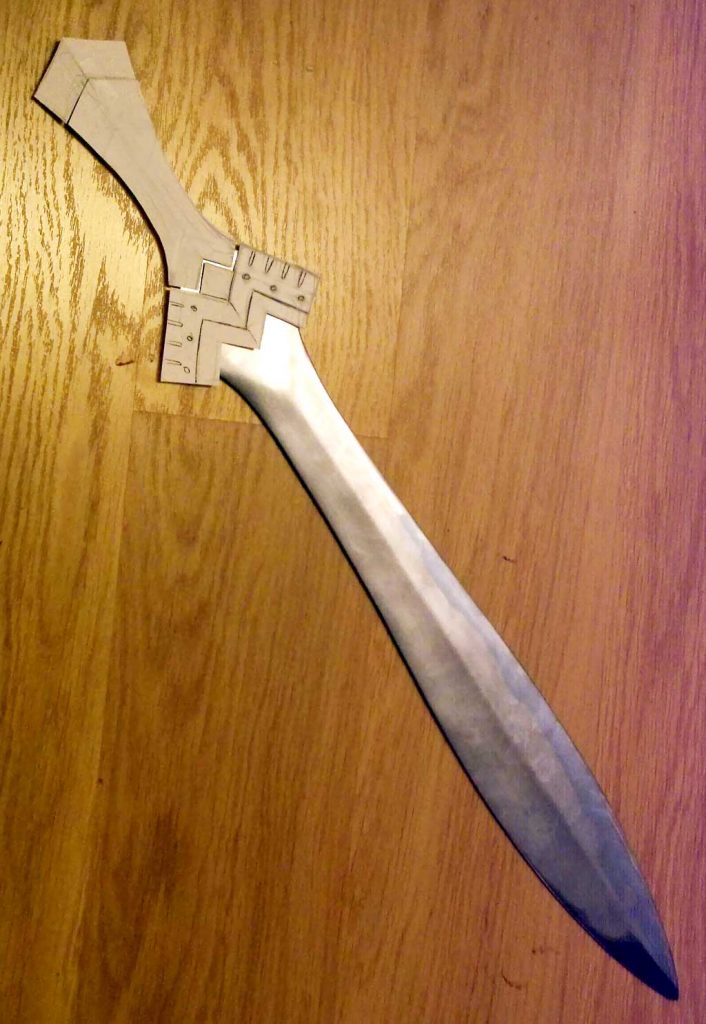
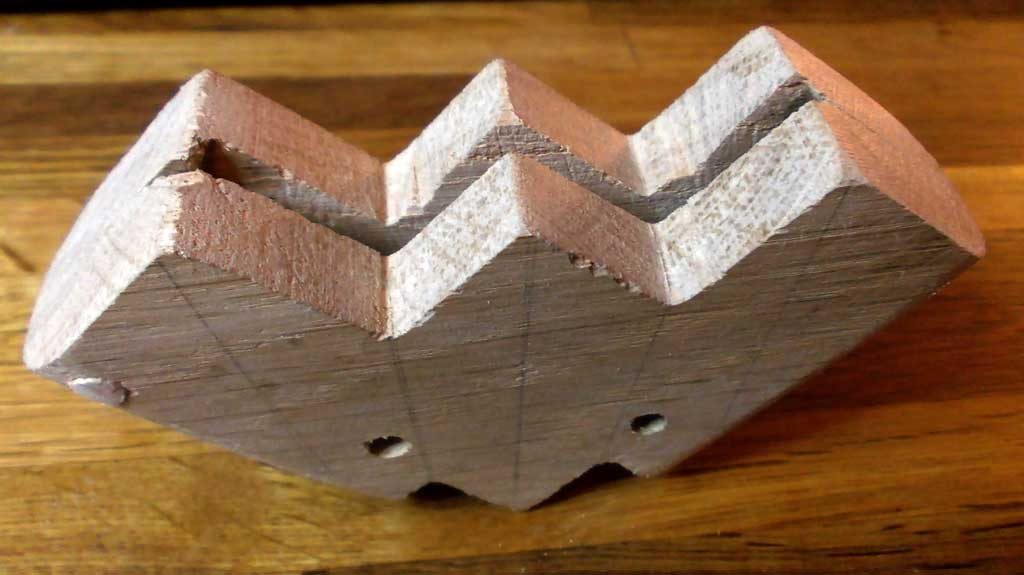
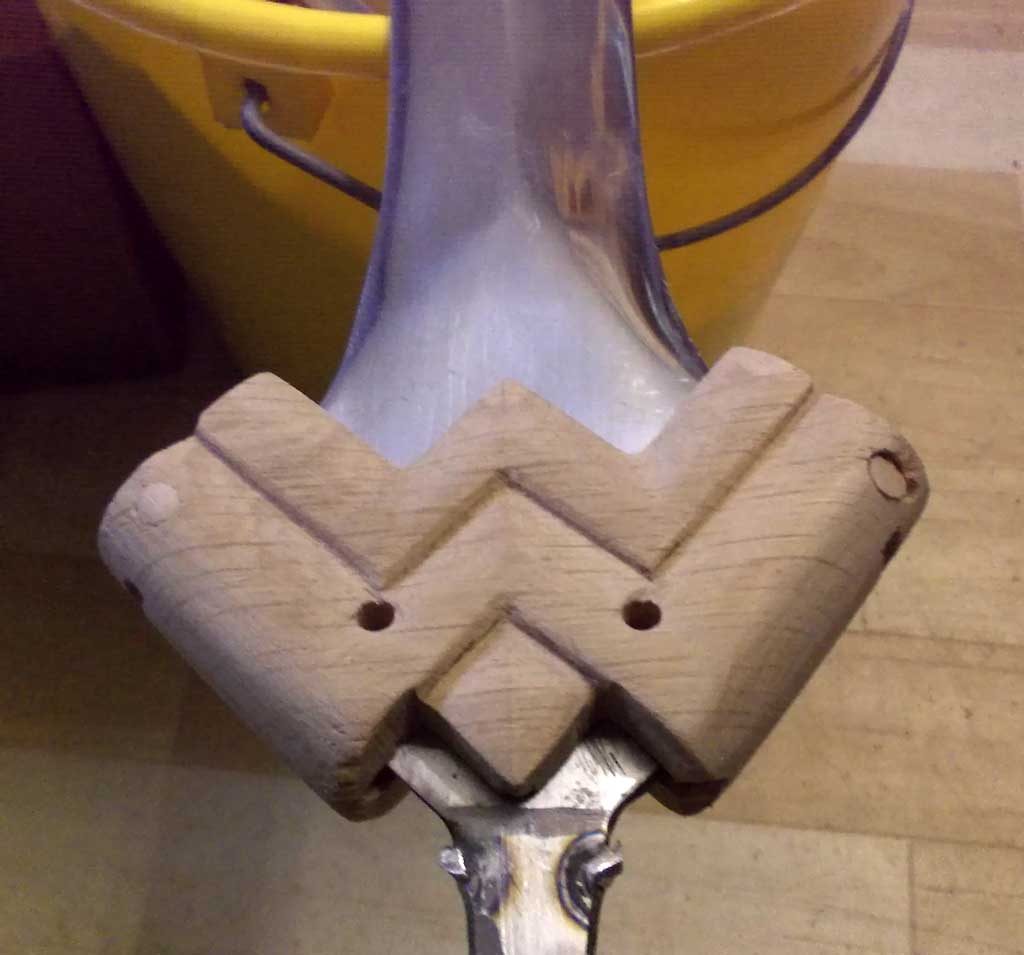
The hilt and grip are cut from oak floorboard, the pommel is shaped from a piece of beech shovel handle. I acid-etched the blade because I don’t like mirror polish on swords.
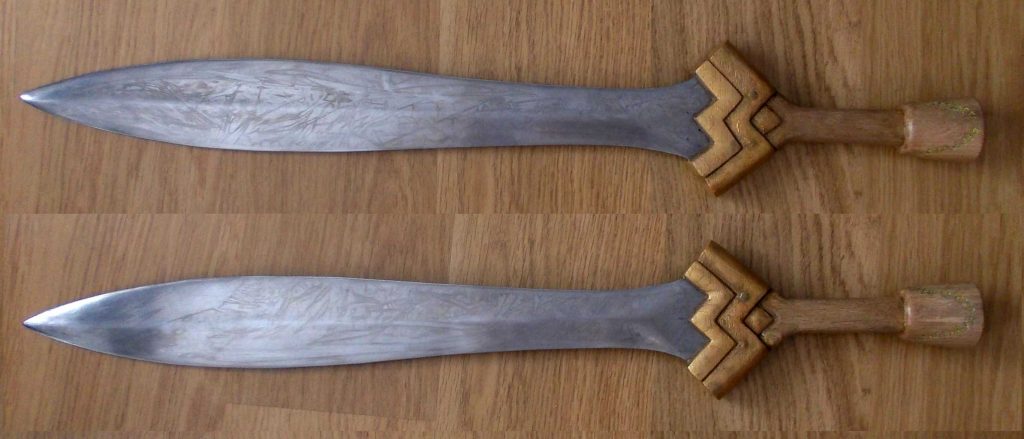

The hilt is secured to the blade with 2 steel pins. I used the original screw thread, the nut and washer are recessed into the pommel.
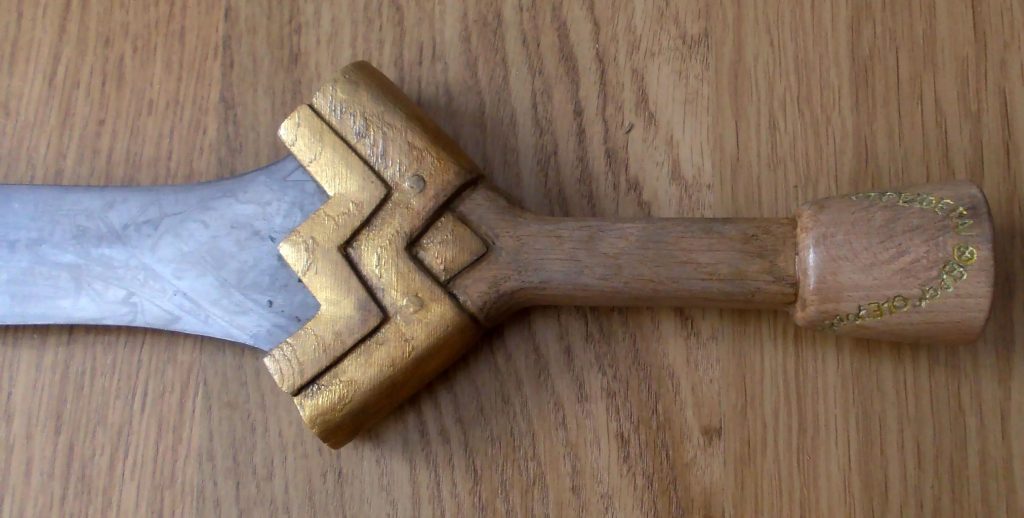
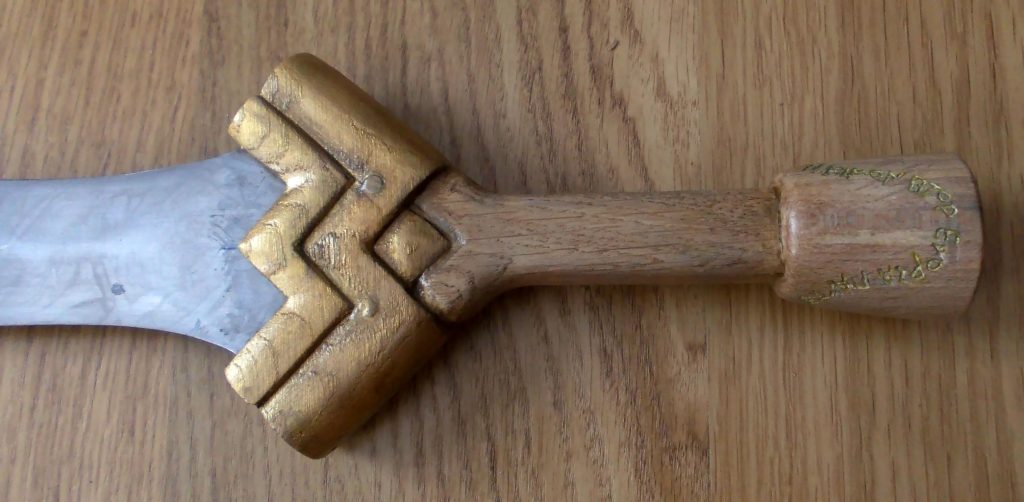
I added some engraving on the pommel, but it was less successful than I hoped. Probably my characters were too small to be engraved on beech, also because of the pommel shape, wood grain goes in all directions. But it probably doesn’t matter because I used ancient Greek characters, few would be able to read it anyway 😉
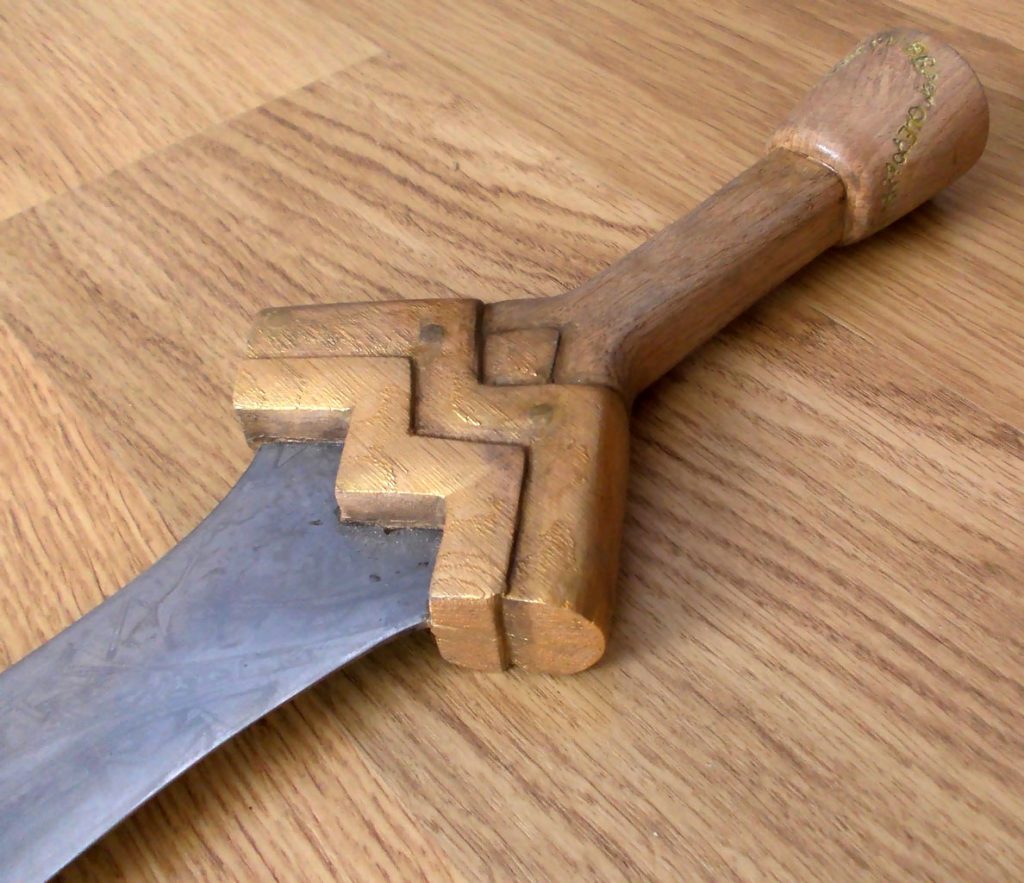
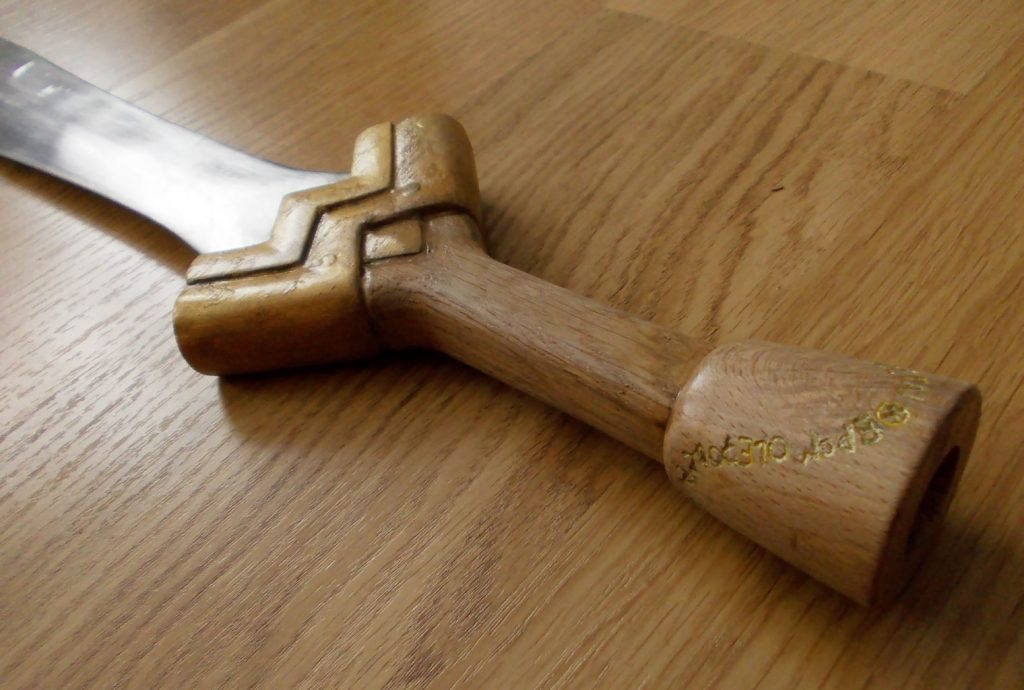
It’s supposed to say: δ᾽ ἄλκιμον ἦτορ ἔχουσα πάντη ἐπιστρέφεται θηρῶν ὀλέκουσα γενέθλην
Which is from a Homeric hymn to Artemis, and says something along the lines of “surrounded on every side, but with a bold heart she destroys the predatory race”
Afterwards I decided to shorten the grip to a more reasonable length. I added the brass “pommel cap” from the donor sword to hide the screw end.
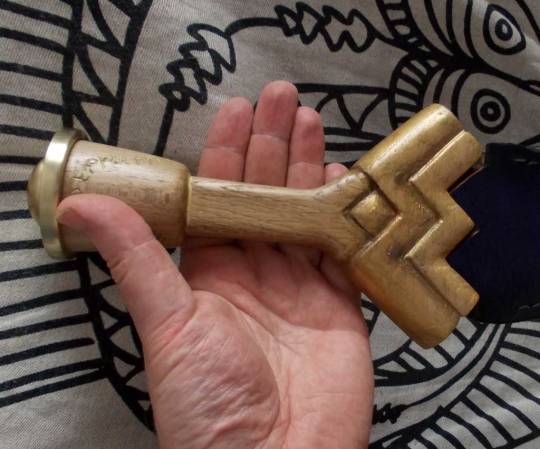
It bugs me that most reproductions of swords from antiquity make the grip way too long so it becomes very hard to hold them correctly. They’re probably catering to the ignorance of the public, but still. The “hilt” on these types of swords has almost zero defensive capability, so this should be seen as part of the “grip” rather than as a “hand guard”.
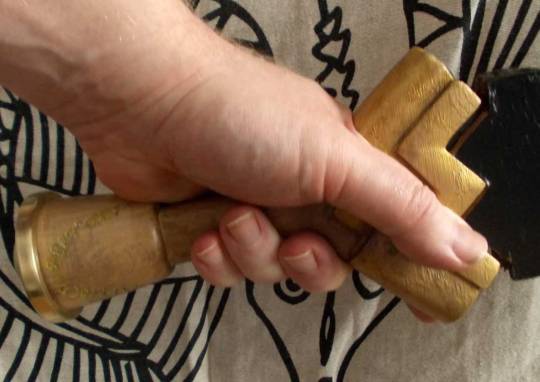
Grasping the front part of the grip is necessary for maintaining proper edge alignment, particularly considering that the middle part is often cylindrical and no help at all.
On the other end, the hand needs firm contact with the “pommel” to absorb the centrifugal force of swinging a tip-heavy leaf-shaped blade one-handed, otherwise you must maintain a death-grip to keep the sword from slipping forward, which very soon tires out the hand.

